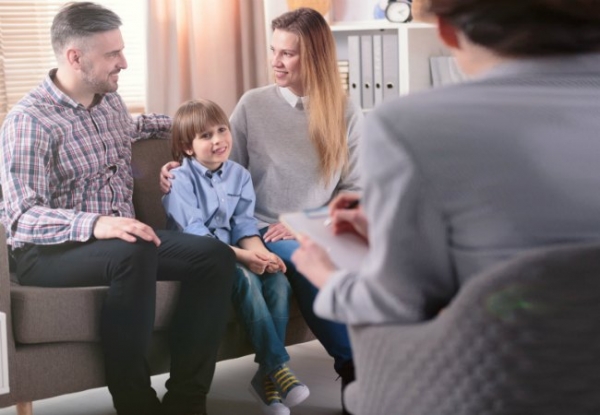Teaching Children to Resolve Conflicts
by Rebecca EanesContinued...
Jack: Hey! Give it back Sam! I’m playing with that!
Sam: No! I want to play!
You: Hey, what’s the shouting about?
Jack: Sam took my T-Rex that I was playing with!!
You: So Jack was having a turn with the T-Rex and you wanted a turn? Can you tell him what you want?
Sam: I want a turn with the T-Rex!
Jack: It’s my turn!
You: I hear you. You both want a turn. What solution can we come up with?
Jack: I can give the Sam the T-Rex when my turn is over.
Sam: But I want it now!
You: Sam, I hear that you want the T-Rex now, but how would you feel if Jack grabbed it out of your hands before your turn was up?
Sam: Bad I guess. Fine, but I want a turn soon.
Jack: I’ll play with it until lunch, and then you can play with it.
Sam: Ok.
You: That sounds like a great solution! Well done!
##ad##
Of course, these situations don’t always go so smoothly, but we do the best we can at helping them come to a peaceful resolution. After a few practices, they’ll begin to do this on their own. I still remember the day I started to step in during a sibling dispute and my older son, “That’s okay, Mom. We can handle it.”
Magical.
Problem-solving is another important aspect of conflict resolution. When children are presented with problems like wanting the same object, they need to learn how to compromise. Rather than jump in and give them a solution, ask them to come up with the solutions. This builds their problem-solving muscles! You may need to nudge them along by asking questions like “what caused you to do that” or “how do you think that made her feel” or “what was the outcome of your decision?” Tell them to look for win/win solutions or a compromise that everyone is happy with. Then, go through the solutions with them and ask if they all agree. Once an agreement is made, watch to make sure the kids follow through with their agreement. For more on problem solving, read my article How to Raise a Problem Solver.
Finally, children should be taught how to do repair work after conflict. Rather than forcing children to apologize, focus on coaching them through relationship repair. Ask “how can you make this better” or “what do you think your friend needs right now?” If your child is ready to give a heartfelt apology, that’s great. Other suggestions might be to help repair or rebuild something that was destroyed, draw a card, help the sibling with a chore, etc. When children are given the responsibility and the opportunity to repair the relationship, they learn that they can make things better and that they’re capable of fixing mistakes. If the child doesn’t want to do any repair work, they’re probably still harboring hurt feelings that need to be worked through. You might just say, “It sounds like you need a little more time. I know that you’ll do the right thing when you’re ready to make this better.”
Summary for Teaching Peaceful Conflict Resolution
1. Teach your child about emotions. Emotional intelligence is key not only to conflict resolution but to success throughout life. Empathize with your child’s emotions. Talk about feelings often. Discuss how others might be feeling. Play games that teach children about emotions and role-play scenarios to really help the lessons stick.
2. Teach positive, effective communication skills. One way to do this is through your role as interpreter. Walk the children through verbalizing their feelings and needs as well as listening to the feelings and needs of the other child.
3. Help the children be problem solvers by asking questions that help them come up with win/win solutions. Monitor to make sure they honor their agreement.
4. Coach the children to make things better through repairing the relationship. Empowering them to make things better helps them feel better, too.













